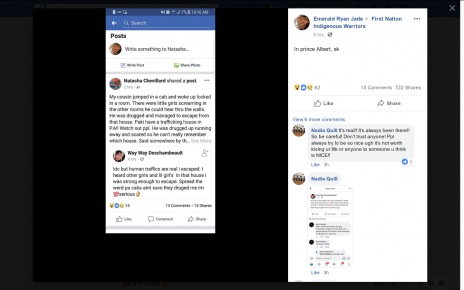Molecular virologist David Speicher revealed in his recent bombshell study that he found billions of DNA fragments in the COVID vaccine.
Why Would There Be DNA in mRNA Vaccines?
Why DNA Impurities in mRNA Vaccines Are Concerning
Vials With More DNA Fragments Related to More Adverse Events
What’s Next?

A recent preprint study that is awaiting peer review reveals billions of leftover DNA pieces in the vials of the COVID-19 mRNA vaccine.
Molecular virologist David Speicher, the study’s lead author and virology PhD holder, said that their research is “the largest study” on leftover DNA in COVID-19 vaccines to date.
“In our study, we measured DNA copies of spike, ori (origin of replication), and SV40 enhancer genes,” he stated. “The loads of SV40 enhancer-promoter, ori, and virus spike in Pfizer are up to 186 billion copies per dose.”
He is referring to the SARS-CoV-2 spike protein’s DNA sequence, which can be converted into spike mRNA and utilised in COVID-19 mRNA vaccines to produce spike protein. The two additional DNAs, ori and the SV40 enhancer genes, aid in the replication of spike DNA.
But the final mRNA vaccines ought to have solely RNA—not leftover DNA instructions for producing spikes.
The European Medicines Agency said that Pfizer kept the SV40 DNA sequence secretly in the COVID-19 vaccine.
The gene material in 27 mRNA vaccination vials from 12 different lots was sequenced by the researchers. Eight vials came from Pfizer, and the remaining nineteen were from Moderna.
“Further work is needed to investigate if anything in these vaccines is actually integrating into the human genome and what effect that may have,” the lead author wrote.
Why Would There Be DNA in mRNA Vaccines?
The DNA used to make the mRNA vaccinations.
Pfizer first stated that the DNA for the mRNA vaccines will be produced using a PCR machine. The DNA would be copied numerous times by the PCR equipment before being sequenced into RNA.
Pfizer, however, declared that it will employ microorganisms to bulk create the spike DNA since this method would not be quick enough to fulfil demand. After the bacteria created their DNA, it would be collected and machine-sequenced to RNA.
Additionally, Moderna’s manufacturing report to the European Medicine Agency revealed that the vaccines were made using plasmid DNA. Circular DNA strands, known as plasmids, are frequently found in bacteria and some parasites. Human DNA is linear, whereas plasmids are circular.
A common biotechnological procedure used in the manufacturing of medications is the use of bacteria to create genes and proteins.
Scientists must first insert spike protein DNA into the bacterium in order for the bacteria to reproduce the DNA. The DNA encoding the spike protein increases in number along with the bacteria.
The SV40 enhancer gene, which promotes more DNA replication, the ori, which signals for DNA replication, and an antibiotic resistance gene, which aids in the identification of the bacteria that have taken up the gene, are among the sequences that would be introduced together in a circular bacterial DNA because the spike DNA cannot be introduced alone.
It should be mentioned that the SV40 enhancer gene is derived from the DNA virus known to induce cancer in lab animals, polyomavirus simian virus 40 (SV40). The SV40 virus itself is not the gene.
The DNA is meant to be extracted from the bacteria once the mRNA and DNA have been extracted.
The billions of copies of spike, ori, and SV40 enhancer DNA found in the Pfizer vials, however, indicate that it was not removed effectively. The Moderna vials also contained millions of copies of ori and spike DNA, but no SV40 enhancer gene was discovered.
Why DNA Impurities in mRNA Vaccines Are Concerning
There’s a chance that foreign DNA that enters the cell with the mRNA will be confused with human DNA. If so, it can be incorporated into the cell’s design.
The primary author stated that the presence of SV40 enhancer genes raises the likelihood of DNA integration, citing a 1999 study that discovered maximum transport of DNA using the SV40 enhancer. In terms of overall publishing rate, the 1980s to 1999 was the highest period for SV40 publications.
Spike protein sequences will always be present in cells if the DNA encoding the protein is incorporated into the host genome. Studies on viral DNA integration have demonstrated that cancer can also result from the integration of foreign DNA into the human genome.
Because the SV40 enhancer gene originates from a virus associated with cancer, it is quite contentious in the field of immunisation.
It was discovered that many polio vaccinations given between 1955 and 1963 included the entire SV40 virus. Still, research has shown that those who receive the whole SV40 gene vaccination do not have an increased risk of cancer.
Vials With More DNA Fragments Related to More Adverse Events
The study also revealed that vials containing larger amounts of DNA can result in more side effects, similar to those recorded on the Vaccine Adverse Reaction Reports System (VAERS).
These vaccinations were typically found in purple-topped vials that needed to be diluted before being given. Pharmacists run the risk of unintentionally giving youngsters five times the prescribed dosage if they neglect to dilute the vials. As a result, improper vaccination dosage may possibly be connected to the increased adverse effects.
To calculate the DNA content dose, the researchers employed qPCR and fluorometry.
The DNA content was found to be 188–500 times higher than the FDA’s (10 nanograms per dose) maximum, according to the fluorometry test. The results of the qPCR test, however, showed that the measured DNA amounts fell short of the regulatory threshold.
One of the study’s authors, Kevin McKernan, who has 20 years of genomic sequencing experience and worked on the Human Genome Project before founding Medicinal Genomics, explained that the reason for the test discrepancy was that, although fluorometry can detect double-stranded DNA of any size, qPCR can only detect DNA with 100 base pairs or more.
Even yet, Mr. McKernan previously clarified that the FDA requirements were published during a period when any remaining DNA in the vial would only be naked DNA that would have trouble entering cells, even though the qPCR testing produced results below regulatory standards. Unlike the existing mRNA vaccines, DNA can now be directly transported into cells by being encapsulated in lipid nanoparticles.
What’s Next?
Much more investigation is required to determine whether the COVID-19 vaccines contain contaminated DNA.
To reach a more precise conclusion regarding the impact of DNA dose on post-vaccination symptoms, more laboratories must replicate and test the studies conducted by his team.
One of the primary author’s unresolved concerns is if the SV40 sequence in the vaccines is causing “turbo cancer,” among other things. In order to ascertain whether remaining DNA is triggering an immune response, animal research is also required.
As reported in recent Epoch Times articles, vaccination experts including Dr. Robert Malone voiced concerns about the DNA contamination of Pfizer COVID-19 vials, but the FDA declined to recall the immunisations. The European Medicines Agency also informed Pfizer that it had failed to disclose that SV40 genes were present in its vials. Source



